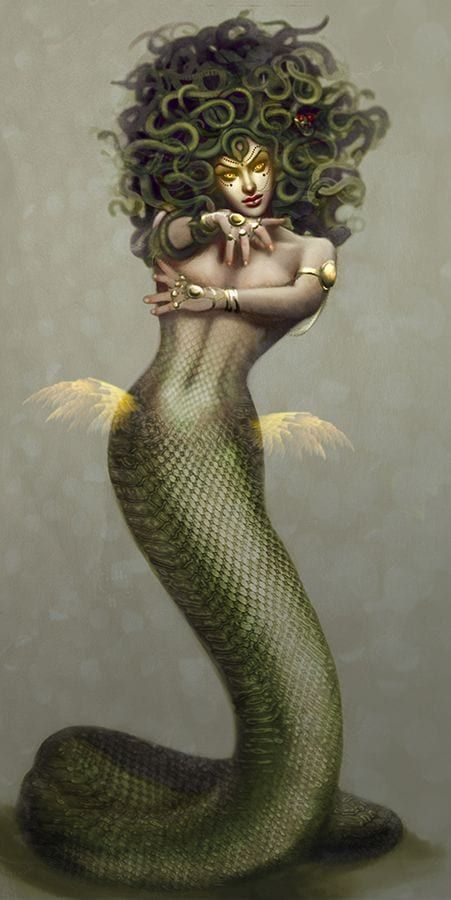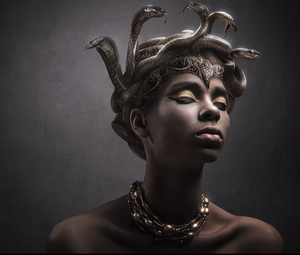Naga kanya and sarpa lok people are not the same. It’s a common mistake to assume they are the same, but that would be like thinking the python and the cobra are the same or even thinking that the Viper and the quetzalcoatl are not different. The term naga signifies every one of the children of Mother Kadru and her children.
Also, regarding Naga kanyas as visha kanyas is a rookie mistake. One is venomous and the other is poisonous. A whole world of a difference
They don’t live over the earth and prefer spaces under water or under earth to create their residence. This was one of the reasons that water bodies in ancient temple complexes were marked with a symbol of the naga as it symbolized the entrance into another world.
One of the chroniclers of Alexander, Onesikratos reports that the King of Abhisara (Southwest Kashmir) kept two snakes with him; 80 and 140 cubits in length. Also, the earliest numismatic evidence of the Naga tribe would be of the Kada kingdom, that flourished around the Shiwalik region. Kada could be from the word ‘Kadru’ or the mother of the Nagas.

Not just in India, there are Naga lands in Indonesia, Malaysia, Srilanka, South America etc. In Sri Lanka, Certain places such as Nagadeepa in Jaffna and Kalyani in Gampaha are mentioned as their abodes. The Jaffna Peninsula was mentioned in Tamil literature as Naka Nadu, in Pali literature as Nagadeepa and in Greek gazetteer as Nagadiba. The name Nagabhumi was also found on a Brahmi-inscribed coin from Uduthurai, Jaffna and in a Tamil inscription from Pudukkottai, Tamil Nadu referring to the Jaffna peninsula.
In India, the Chandra Vamshi tribes include the Nagas. Although, the moon folk are tribes like the Apsaras, the snake tribes are a large and important part.
The meeting of water and soil was a very important landscape that was auspicious to the Nagas.
This is one of the reasons that you will find large number of snake temples in the areas around water bodies. In fact, most of Kerala at one time had Sarpa Kaavus around temples and ever Nair residences. A human became more potent and powereful with the presence of the Nagas and that is why many warrior tribes decided to co-exist with snakes.
Naga kanyas were women who were the most beautiful on the planet. It is no wonder that Uloopi captured the attention and love of Arjuna the way she did. Their skin was cool to touch and had a glistening quality that was particularly evocative in the moonlight. Humans were vulnerable to snake venom . They were shape shifters with a body that could expand and contract and skin that worked to cover any size. Naga kanyas are not the same species as humans. They choose the human form when they wish to interact with them or raise families with them, but the differences between them are many in number. For one, the naga kanya will always have an egg first before she has her baby grown from the hatchling. In order to show their talent in shape shifting, there is a large volume of artwork showing nagas with human torsos and snake tails or snake heads and human legs. Their skills and competence change with the form they take but the tongue remains forked. They may be able to hide the forked tongue for a short period of time, but if you take them near water/ moist areas, the tongue reveals itself.
